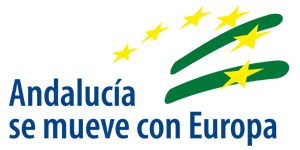The ASTER project (aster.us.es/en) emphasizes the co-creation of knowledge and the construction of meaning through the collaboration between art and science. It acknowledges that truth is not fixed but rather shaped by social and cultural contexts, and it highlights the importance of considering various viewpoints to gain a multifaceted understanding of complex realities in two thematic areas: Natural Environment and AI.
In the context of AI, it prompts a re-evaluation of traditional notions of authorship and the potential limitations of those systems, raising questions about the ownership of truth when AI is involved in knowledge construction.
In the framework of Natural Environment, it reflects on the multifaceted epistemology of truth in the context of the Anthropocene, and its necessary re-connection to nature facilitated through SciArt expressions.
Furthermore, the democratic and sustainable approaches of the ASTER project enabled the involvement of general society and a broad participation in person and online. Its “eco-SciArt methodology” supported the shared efforts to transform a “scientific seed” (scientific topic) into a “SciArt flower” (proposal) during a hackathon, and into the final “SciArt fruit” (final artwork).
The main objectives were to transform the archetypical roles of art and science by the development of cross-pollinated critical thinking and co-creativity, as an attempt for a more comprehensive understanding of truth in a complex changing world.
-

Biases and machine translation
Helena Hernandez Acuaviva (ES), Agda Carvalho (BR)
This work explores the influence of algorithms in our daily lives, highlighting their role in decision-making and information retrieval, as well as the existence of errors and biases in these intelligent technologies.
-
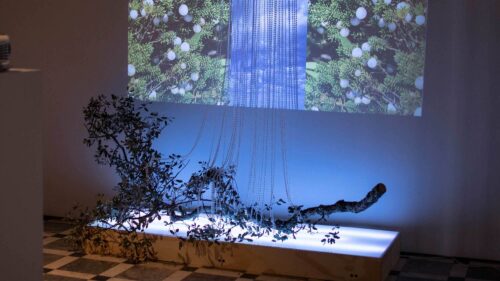
Camarina #2
Rocío García Robles (ES), Amalia Ortega Rodas (ES)
The resilient Camarina symbolizes nature’s adaptability and survival. The sand protects it from fire and its pearls offer support to the dunes and nourishment to wildlife, highlighting their interdependence.
-

emergANT
Rawand T. A. Masri (PA), Marco Daniel Mosquera Lozano (EC), Celia Hermoso Soto (ES)
In this work the collective interactions of simulated ants lead to an emergent solution, not dictated by a centralized authority. The citizens’ opinions from Hebron, Quito and Seville symbolize subjective understandings of happiness.
-
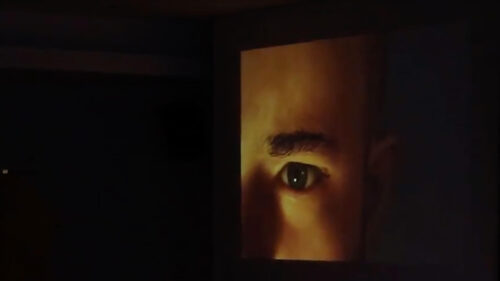
I am the real you
Javier González Borbolla (ES)
An AI being, created in my own image, tries to convince me that she is the one who possesses my identity, and I am a usurper.
-

Light Phase / Dark Phase
Aurea Muñoz del Amo (ES), Carmen Salazar Pera (ES)
This work portrays photosynthesis light and dark phases. It symbolizes a microscopic perspective and highlights a scientific approach. However, the explanation of photosynthesis may have varying scientific interpretations.
-
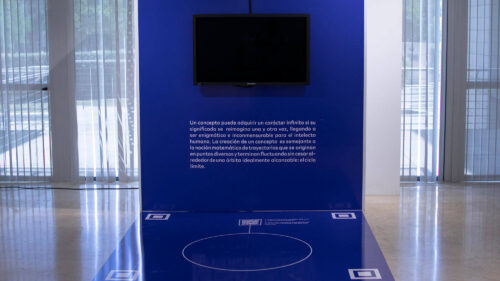
Limit Cycle
Víctor Fernández Calderón (ES), Triana Sánchez Hevia (ES), Raquel Serrano Tafalla (ES), Rafael Garrido Vílchez (ES), Emiliano González Herrer (ES), Javier Alejandro González Borbolla (ES), Rosa María Molina Arregui (ES)
Meaning is not fixed but rather a cyclical process influenced by social and cultural contexts through a semantic consensus. In this work AI is a subversive element, challenging social conventions and introducing alternative perspectives.
-
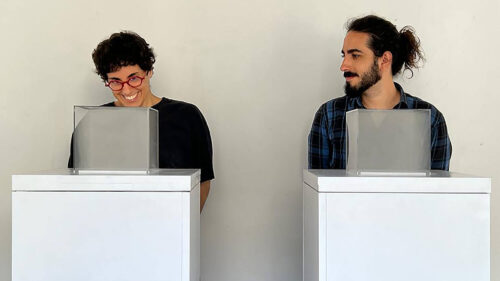
NADA
Guillermo Rodríguez Tenorio (ES), Olga Albillos Castillo (ES)
In this work, AI perceives the void and confronts the absence of a reference model. In the encapsulated sculpture, AI’s ability to generate intangible interpretations without a reference database is represented. The smoke, symbol of nothingness and disappearance, resists being seen, aspiring to be a nothingness it cannot reach.
-
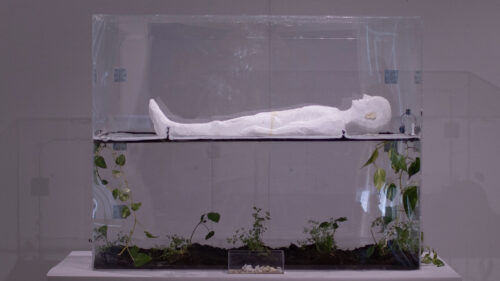
Rigor Plastic 2
Eduardo Julio Lavrador Jiménez (ES), Yolanda Martín Benítez (ES)
This work includes a porexpan human figure in an urn house, used as food for worms. Their enzymes digest synthetic material, and their excrement nourishes the plants below. The happening underscores the significance of the circular economy and bioplastics.
-

Roots, relationships between the computational and the human
Mariano Luque Romero (ES), Miguel Mendoza Malpartida (ES), Cecilia Pineda Calvillo (ES), Esther Rodríguez Pluma (ES), José María Delgado Sánchez (ES), Pedro Escobar Rubio (ES)
The combination of cellular automata, mathematical algorithms, and human creativity creates a multi-sensory experience, blurring the line between human behavior and algorithms, and raising questions about ownership of the process.
-

Too common and meaningless
José Manuel Higes López (ES), Lucie Campuzano (ES), Beatriz Requejo (ES), María José Ventaja (ES)
This micro-theatre explores human relationships and AI. It examines the shared understanding of common sense as a form of collectively owned truth, while also considering its limitations. Common sense can both limit and liberate human relationships, hindering genuine understanding yet providing a foundation for communication.
-

Twenty times true
Cristina Quintana Laforet (ES), Natalia Herrera Pombero (ES), José Manuel Higes López (ES)
AI can disrupt established truths by inspiring alternative realities. In this icosahedron, each face represents a group of established truths from different domains. Visitors can explore alternative perspectives, challenging the ownership and stability of established truths.
-

Video Data Bank. Work In Progress
Juan Manuel Torrado Martínez (ES)
This work involves a program accessing a database to generate images based on parameters. It considers who should be credited as the creator of the visual content and whether the program’s involvement diminishes the significance of human creativity.
About
The University of Seville (US) is a public university based in Seville, Andalusia (Spain). It is the third Spanish university in number of students and the first in Andalusia, with more than 500 years. It has a remarkable historical and artistic heritage, and a wide range of degrees in all areas of knowledge.
It is in the top 2.1 percent worldwide (data from the 2022 edition of the CWUR research ranking).
It promotes innovation in Art, science and technology at the service of society.
Credits
Project ASTER is funded through the European Regional Development Fund (ERDF) and the Department of Economic Transformation, Industry, Knowledge, and Universities of the Andalusian Regional Government, Operational Program 2014-2020. REFERENCE: US-1381015
COAAT (Foundation of the College of Technical Architects of Seville www.coaat-se.es/) ETSII (Higher Technical School of Computer Engineering, www.informatica.us.es/)




